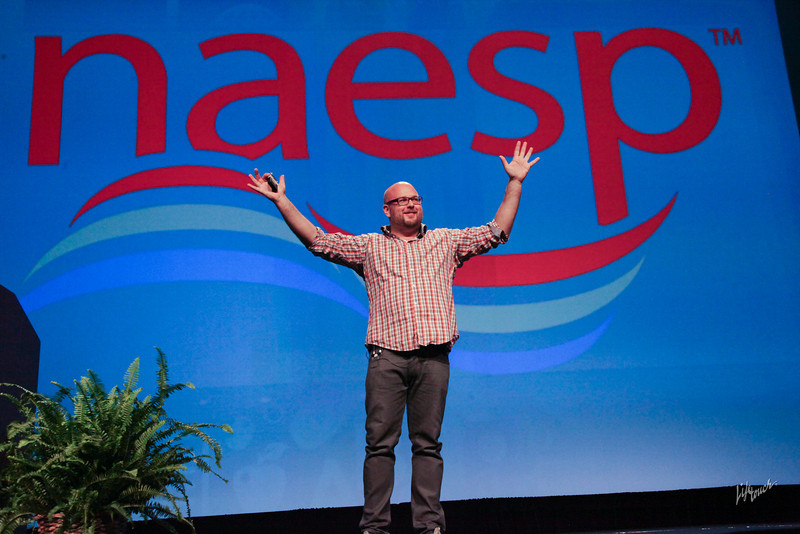Gamification: The (New) New Normal
Conference News Online – 2013 By Olivia Gault Let me start with a caveat: I don’t play video or computer games, and I didn’t allow my adolescent son to play them much. I don’t get them. However, I am mesmerized by Gabe Zichermann and his take on gamification in education.
By Olivia Gault
 Let me start with a caveat: I don’t play video or computer games, and I didn’t allow my adolescent son to play them much. I don’t get them. However, I am mesmerized by Gabe Zichermann and his take on gamification in education.
Let me start with a caveat: I don’t play video or computer games, and I didn’t allow my adolescent son to play them much. I don’t get them. However, I am mesmerized by Gabe Zichermann and his take on gamification in education.
Zichermann launched his plenary session, “The Gamification Revolution” with an anecdote. Perhaps you’ve heard of the documentary TV series, The Aviators? It shows how airline pilots train and planes are built. On the show, a 12-year-old was put in a flight simulator used to train actual pilots, and the boy safely “landed” a jet aircraft at the Los Angeles airport. How did the boy, with no training, do this? He plays video games and he plays them well.
Zichermann used this story to illustrate the difference between “fluid intelligence,” and “crystalized intelligence.” The former is the ability to solve problems—a key component in gamification theory. The latter is the ability to use existing skills or knowledge, what we routinely test for in education. Zichermann said that fluid intelligence is the fundamental idea that will allow us to move forward as a society, and that we can increase it exponentially through game theory.
Just what is gamification and who is Gabe Zichermann? Gamification is the use of game thinking and game mechanics to engage people and solve problems. Zichermann is CEO of Gamification Co. and Dopamine (a creative agency), and an author (most recently of The Gamification Revolution). He is considered the world’s foremost expert on designing engagement strategies. He maintains that game-based learning is a driving force of innovation and that it’s changing education.
In his presentation, Zichermann cited research indicating that we increase our fluid intelligence when we: seek novelty, challenge ourselves, think creatively, do things the hard way, and network. These are common in all contemporary video games. Not easy games, but hard, complicated games. He stated that hard games + hard work = increased intelligence. Players are drawn to keep playing the games by the intrinsic reinforcement of achievement; each time they accept the challenge and achieve in the game, they experience a dopamine release. In a game, this could happen hundreds of times per hour; it’s intrinsic reinforcement.
People raised playing games, Zichermann said, view the rest of the world as being too slow, while we non-gamers may define them as having an “engagement crisis.” How do we get their attention? He suggests games as a homeopathic remedy: engaging users and changing behavior by using best practices of games.
Gamification is not just about earning badges and gold stars, nor is it about making everything into a game. It is about the three Fs:
- Feedback. How are you doing?
- Friends, or social connections.
- Fun, which is different for every person.
When a system has the three Fs, it creates engagement. The addition of constraint and failure makes this creates a powerful learning environment.
If it were as easy as simply being engaged, everyone with a Smartphone would be creating literary masterpieces as they texted away every day. Most aren’t. Games, Zichermann says, get results not by saying “be creative,” but rather, “be creative with this problem.” Also, games allow you to fail often, and permit you to start anew and continue at the click of a button, allowing for repetition and learning from mistakes.
How does all this fit with education? It’s the new new normal. Through many more fascinating anecdotes, Zichermann arrived at the conclusion that great teaching, with scaffolded individual attention and gamification ideas (using games to augment, but not replace curriculum), is the new new normal for education. He stressed that the gamification concept isn’t about subject matter as much as it is about your motivational approach. Consider your students’ method of learning. Zichermann also stressed that this is not the one great truth. It is a strategy: motivation better understood through the prism of gamification. Ultimately, systems with greater engagement will upend other systems.
For resources and examples of gamification supporting education, visit www.gamification.org/education.
Olivia Gault is director communications and professional development at the Minnesota Elementary School Principals’ Association.
Photo courtesy of Lifetouch.
Copyright © National Association of Elementary School Principals. No part of the articles in NAESP magazines, newsletters, or Web site may be reproduced in any medium without the permission of the National Association of Elementary School Principals. For more information, view NAESP’s reprint policy.

